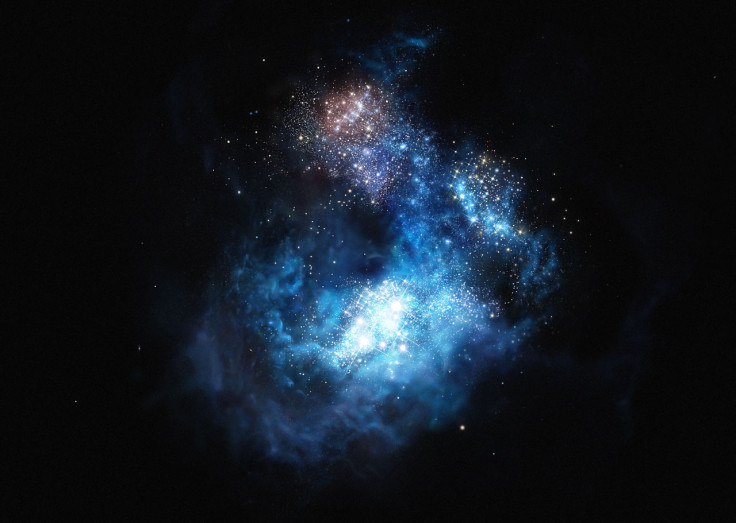VLT discovers first generation stars of the universe in brightest, distant galaxy

The brightest galaxy in the early universe has been discovered with its first generation stars that spawned most of the first heavy elements so crucial for star formation and life as we know it.
More such stars can be found amongst more easily accessible regular stars and in brighter galaxies, concludes the study.
Using ESO's Very Large Telescope (VLT), astronomers from Portugal and the Netherlands spied the new galaxy, labelled CR7, which is three times brighter than the brightest distant galaxy known so far.
The team led by David Sobral, from the Institute of Astrophysics and Space Sciences, the Faculty of Sciences of the University of Lisbon in Portugal, and Leiden Observatory in the Netherlands, used VLT to peer back into the ancient universe, to a period known as reionisation, approximately 800 million years after the Big Bang.
This is the second phase after Big Bang where objects started to condense in the early universe that were energetic enough to ionise neutral hydrogen. The universe was once again ionised plasma from a neutral opaque hydrogen soup.
The team discovered a number of surprisingly bright very young galaxies. One of these, labelled CR7 was by far the brightest galaxy ever observed at this stage in the universe.
The emission spectra from the galaxy further revealed the presence of strong ionised helium in CR7 but no sign of any heavier elements in a bright pocket in the galaxy.
This confirmed them to be clusters of Population III stars.
"The discovery challenged our expectations from the start," said David Sobral, "as we didn't expect to find such a bright galaxy. Then, by unveiling the nature of CR7 piece by piece, we understood that not only had we found by far the most luminous distant galaxy, but also started to realise that it had every single characteristic expected of Population III stars. Those stars were the ones that formed the first heavy atoms that ultimately allowed us to be here. It doesn't really get any more exciting than this."
Population III stars
Theory speaks of a first generation of massive stars known as Population III born from the primordial Big Bang stuff. These then formed the initial kitchen where heavier elements like oxygen, nitrogen, carbon and iron, essential to life were cooked from hydrogen and helium and trace lithium.
Being very big and hot means they exhaust their nuclear fuel supplies very quickly, and explode as supernovae after only about two million years.
Whether it is the oxygen we breathe or the calcium that holds our bones and body firm or the iron in our blood, it was all set off in these Population III stars billion years ago. As Carl Sagan was given to saying, we are made of star stuff and most of it was made in those early stars.
Finding these stars is very difficult given their short lives and the fact that they lived at a time when the universe was largely opaque to their light.
The study was made using the VLT with help from the W M Keck Observatory and the Subaru Telescope as well as the Nasa/ESA Hubble Space Telescope.
Within CR7, bluer and somewhat redder clusters of stars were found, indicating that the formation of Population III stars had occurred in waves, as predicted by theory.
The team's observation belonged to the last wave of Population III stars, suggesting that such stars can also be found amongst regular stars, in brighter galaxies, not just in the earliest, smallest, and dimmest galaxies, which being distant are difficult to study.
Jorryt Matthee, second author of the paper, concluded: "I have always wondered where we come from. Even as a child I wanted to know where the elements come from: the calcium in my bones, the carbon in my muscles, the iron in my blood. I found out that these were first formed at the very beginning of the universe, by the first generation of stars. With this discovery, remarkably, we are starting to actually see such objects for the first time."
Further observations with the VLT, ALMA, and the Nasa/ESA Hubble Space Telescope will confirm the identity of the Population III stars, and look for more.
© Copyright IBTimes 2025. All rights reserved.





















